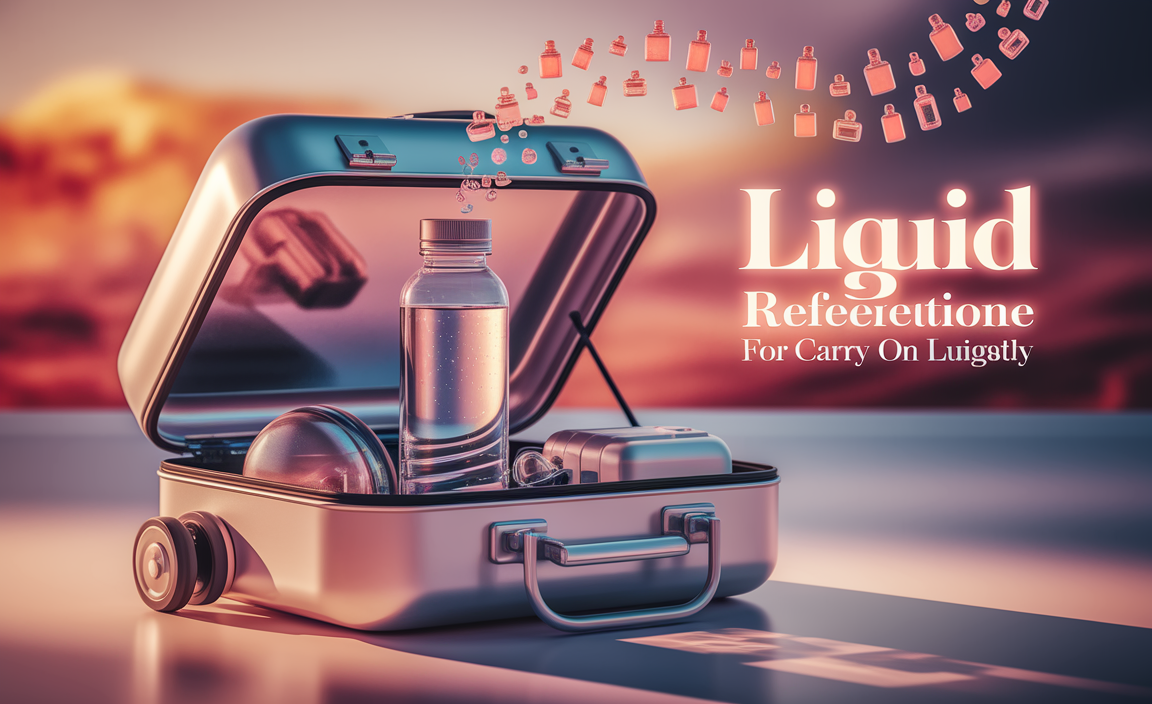Planning a Blue Mountains winter trip? This essential guide provides all you need for a cozy, fun, and stress-free escape. From packing tips and must-see attractions to navigating the crisp mountain air, discover how to make the most of your adventure, ensuring comfort and preparedness every step of the way.
The Blue Mountains in winter transform into a magical wonderland, offering a refreshing escape from the everyday hustle. Yet, planning a trip to a cooler climate can sometimes feel a bit daunting, especially if you’re new to winter travel or traveling with little ones.
We understand you want to focus on the breathtaking scenery and cozy evenings, not on wardrobe woes or unexpected chills. That’s why we’ve put together this straightforward guide. We’ll walk you through everything you need to know to ensure your Blue Mountains winter adventure is comfortable, safe, and utterly enjoyable. Get ready to experience the best of the mountains with confidence!
Your Essential Blue Mountains Winter Trip Checklist
Heading to the Blue Mountains in winter is a fantastic choice. The air is crisp, the crowds are often smaller, and the landscapes take on a special kind of beauty. To make sure your trip is as smooth as a gentle ski slope, a little preparation goes a long way. Here’s your go-to checklist to guarantee a comfortable and memorable experience.
Packing for the Cold: Layers are Your Best Friend
Winter in the Blue Mountains can mean chilly temperatures, sometimes dipping below freezing, especially at night or higher elevations. The key to staying warm and comfortable is layering. This strategy allows you to adjust your clothing as the temperature changes or as you become more active.
Base Layer: This is the layer closest to your skin. It should be moisture-wicking to draw sweat away from your body, keeping you dry and warm. Think thermal underwear made from merino wool or synthetic fabrics. Avoid cotton, as it holds moisture and can make you feel cold.
Mid Layer: This layer provides insulation. Fleece jackets, down vests, or wool sweaters are excellent choices. They trap body heat to keep you toasty.
Outer Layer (Shell): This is your protection against the wind and rain or snow. A waterproof and windproof jacket is essential. Look for one with a hood for extra protection.
Pants: Waterproof or water-resistant pants are highly recommended, especially if you plan on hiking or spending extended time outdoors. Insulated ski pants or waterproof shell pants worn over a warm base layer work well.
Footwear: Warm, waterproof boots with good grip are crucial. You’ll be walking on potentially uneven or slippery surfaces. Bring thick, warm socks (again, wool is a great choice).
Headwear: A warm beanie or hat that covers your ears is a must-have. A significant amount of body heat is lost through the head.
Gloves/Mittens: Waterproof and insulated gloves or mittens will keep your hands warm. Mittens are generally warmer than gloves as they keep your fingers together.
Scarf/Neck Gaiter: Protect your neck and face from the cold wind. A neck gaiter is a versatile option that can be pulled up over your nose and mouth.
Accessories: Don’t forget sunglasses (snow glare can be strong!), lip balm with SPF, and sunscreen. Even on a cloudy winter day, UV rays can be intense, especially at higher altitudes.
Beyond Clothing: Essential Items for Your Comfort
While clothing is paramount, other items can significantly enhance your comfort and preparedness during a winter trip.
Backpack: A comfortable daypack is useful for carrying essentials like water, snacks, an extra layer, a first-aid kit, and your camera.
Water Bottle/Thermos: Staying hydrated is important even in cold weather. A thermos for hot drinks like tea or coffee is a welcome comfort on a chilly day.
First-Aid Kit: A basic first-aid kit should always be in your pack. Include bandages, antiseptic wipes, pain relievers, and any personal medications.
Hand Warmers/Foot Warmers: For those extra cold days, these disposable warmers can be a lifesaver.
Portable Charger/Power Bank: Cold weather can drain electronic device batteries faster. Ensure you can keep your phone or camera charged for photos and emergencies.
Snacks: High-energy snacks like nuts, dried fruit, or granola bars are perfect for keeping your energy levels up during outdoor activities.
Essential Documents and Navigation
Before you even pack, ensure you have all necessary documents and understand how you’ll navigate the region.
Identification: Driver’s license or passport.
Accommodation Bookings: Printouts or digital copies of your hotel or Airbnb reservations.
Maps: While smartphones are useful, consider downloading offline maps or carrying a physical map of the Blue Mountains National Park. Mobile reception can be spotty in some areas. You can find excellent resources on national parks from the NSW National Parks and Wildlife Service.
Emergency Contact Information: Keep a list of emergency numbers readily accessible.
Planning Your Blue Mountains Winter Itinerary
The Blue Mountains offer a diverse range of activities, from exhilarating hikes to relaxing spa days. Winter is a perfect time to enjoy many of these with a unique seasonal charm.
Must-See Attractions in Winter
1. The Three Sisters: This iconic rock formation at Echo Point is stunning year-round, but winter’s clear air can offer particularly breathtaking views. Be sure to dress warmly, as it can be breezy!
2. Scenic World: Ride the Scenic Railway, Skyway, and Cableway to experience the Jamison Valley from different perspectives. The winter mist can add an ethereal quality to the rainforest.
3. Leura Cascades: A beautiful, accessible walk to a series of picturesque waterfalls. The surrounding bushland is lovely even in winter.
4. Wentworth Falls: Explore the walking tracks around this magnificent waterfall. The views from the various lookouts are spectacular. Check the NSW National Parks website for track conditions, as some may be closed after heavy rain.
5. Blackheath: This charming village offers lovely cafes, antique shops, and galleries. It’s also a great base for exploring the nearby Govetts Leap lookout, famous for its panoramic views.
6. Katoomba Falls: Another impressive waterfall that’s worth a visit. The walk to the base can be steep but rewarding.
Winter Activities for Every Traveler
Bushwalking & Hiking: The Blue Mountains are a hiker’s paradise. While some trails might be challenging after rain, many are well-maintained. Opt for shorter, well-graded walks if you’re unsure about conditions. Always let someone know your hiking plans and expected return time.
Scenic Drives: If the cold keeps you from extensive hiking, enjoy the stunning scenery from your car. The drive along the Great Western Highway, with detours to lookouts, is a great way to see the landscape.
Cozy Cafes and Pubs: After a day of exploring, warm up in one of the many charming cafes or pubs. Enjoy a hot chocolate, a hearty meal, or a local craft beer.
Art Galleries and Museums: Explore the local art scene in towns like Katoomba and Leura, which boast numerous galleries showcasing local artists.
Wellness and Spas: Many accommodations in the Blue Mountains offer spa services. Indulge in a massage or a warm soak to fully relax and rejuvenate.
Navigating in Winter: Know Before You Go
Winter weather can be unpredictable. It’s wise to check local conditions before you head out each day.
Road Conditions: Always check for any road closures or hazards, especially after rain or frost. The Live Traffic NSW website is an excellent resource.
Weather Forecasts: Keep an eye on the weather. Temperatures can drop significantly, and fog or frost can reduce visibility.
Park Alerts: For specific walking track closures or advice, refer to the NSW National Parks and Wildlife Service alerts page.
Preparing for Specific Needs: Stress-Free Travel Solutions
Travel should be comfortable and stress-free for everyone, regardless of their personal needs. As a traveler myself, I know how important it is to have reliable solutions that allow you to focus on the journey. This includes being prepared for everyday necessities, ensuring your comfort and dignity throughout your trip.
Traveling with Children: Comfort and Convenience
When traveling with children, packing smart is key. They need to stay warm and comfortable, just like adults.
Warm Outerwear: Ensure they have a waterproof and windproof jacket, warm pants, a hat, gloves, and waterproof boots.
Extra Layers: Always pack an extra set of warm clothes, as kids can get messy or unexpectedly wet.
Comfort Items: A favorite blanket or stuffed animal can provide comfort during car rides or downtime.
Entertainment: Books, small toys, or downloaded games can help pass the time on journeys or during quiet evenings.
Snacks and Drinks: Kids need regular fuel. Pack plenty of child-friendly snacks and water.
Managing Personal Care Needs: Confidence on the Go
For adults and children who require additional personal care support, such as adult or child diapers, traveling to the Blue Mountains is perfectly manageable with the right preparation. Ensuring you have an adequate supply of trusted brands known for their absorbency and comfort is vital for peace of mind.
Discreet Packaging: Many products are available in discreet packaging, making transport easier.
Comfort and Absorbency: Choose products designed for long-lasting absorbency and skin comfort, essential for enjoying activities without worry. Brands that offer features like odor control and breathable materials can make a big difference.
Disposal: Plan for discreet and hygienic disposal. Carrying a supply of sealable plastic bags for used products is a practical solution.
Accessibility: Research local pharmacies or convenience stores in towns like Katoomba or Leura just in case you need to purchase a small amount locally, although it’s always best to bring your full supply. Reputable online retailers can deliver directly to your home before you leave, ensuring you have your preferred brand and size.
Having these essentials readily available means you and your family can fully immerse yourselves in the beauty of the Blue Mountains without any added stress. It’s about enabling everyone to enjoy the experience with confidence and comfort.
Sample Winter Packing List for a 3-Day Blue Mountains Trip
To help you visualize, here’s a sample packing list for a typical 3-day winter trip. Adjust quantities based on your personal needs and planned activities.
| Item Category | Day 1 | Day 2 | Day 3 | Notes |
| Outerwear | Waterproof/Windproof Jacket | Waterproof/Windproof Jacket | Waterproof/Windproof Jacket | Essential for all days. |
| Mid Layer | Fleece Jacket/Warm Sweater | Fleece Jacket/Warm Sweater | Fleece Jacket/Warm Sweater | |
| Base Layer | Thermal Top | Thermal Top | Thermal Top | Can re-wear cleaned tops or bring one per day if preferred. |
| Bottoms | Hiking Pants/Jeans | Hiking Pants/Jeans | Hiking Pants/Jeans | Consider waterproof trousers for longer hikes. |
| Footwear | Waterproof Hiking Boots | Waterproof Hiking Boots | Waterproof Hiking Boots | Ensure they are broken in! |
| Socks | 2 pairs Wool Socks | 2 pairs Wool Socks | 2 pairs Wool Socks | Critical for warm and dry feet. |
| Headwear | Beanie | Beanie | Beanie | |
| Gloves/Mittens | Warm, Waterproof Gloves | Warm, Waterproof Gloves | Warm, Waterproof Gloves | |
| Scarf/Neck Gaiter| Scarf or Neck Gaiter | Scarf or Neck Gaiter | Scarf or Neck Gaiter | |
| Undergarments | 3 changes | 3 changes | 3 changes | |
| Sleepwear | Comfortable Loungewear/Pajamas | Comfortable Loungewear/Pajamas | Comfortable Loungewear/Pajamas | |
| Accessories | Sunglasses, Sunscreen, Lip Balm | Sunglasses, Sunscreen, Lip Balm | Sunglasses, Sunscreen, Lip Balm | Even in winter! |
| | Daypack, Water Bottle, Thermos | Daypack, Water Bottle, Thermos | Daypack, Water Bottle, Thermos | Pack snacks and extra layers in the daypack. |
| | Camera/Phone, Power Bank | Camera/Phone, Power Bank | Camera/Phone, Power Bank | Cold drains batteries faster. |
| | First-Aid Kit, Any Personal Meds | First-Aid Kit, Any Personal Meds | First-Aid Kit, Any Personal Meds | |
| | Hand/Foot Warmers (Optional) | Hand/Foot Warmers (Optional) | Hand/Foot Warmers (Optional) | For extra chilly days. |
| Personal Care | Toiletries, Medications | Toiletries, Medications | Toiletries, Medications | Including any necessary personal care items like diapers. |
| | Books/Entertainment | Books/Entertainment | Books/Entertainment | For downtime. |
| Documents | ID, Booking Confirmations, Maps | ID, Booking Confirmations, Maps | ID, Booking Confirmations, Maps | Keep essential documents accessible. |
Safety in the Blue Mountains During Winter
Safety is always a priority, and winter conditions require extra awareness.
Stay on Marked Trails: Especially when visibility is low or conditions are slippery, stick to marked paths.
Inform Others: Let someone know where you are going and when you expect to be back, particularly if you are hiking alone.
Check Conditions: Always check the weather forecast and any park alerts before heading out.
Be Prepared for Ice and Frost: Trails can become icy, especially in shaded areas. Wear appropriate footwear with good grip.
Hypothermia Awareness: Understand the signs of hypothermia (shivering, confusion, drowsiness) and how to prevent it by staying dry and warm.
Mobile Reception: Be aware that mobile phone reception can be unreliable in many parts of the Blue Mountains. Carry a fully charged power bank.
* Emergency Services: Know the emergency number (000 in Australia) and be aware of your location.
Conclusion
Your Blue Mountains winter trip doesn’t have to be complicated. By focusing on preparation, you can ensure a journey filled with breathtaking scenery, cozy moments, and complete comfort. From layering your clothing like a pro to packing those little essentials that make a big difference, this guide arms you with the knowledge to navigate the crisp mountain air with confidence. Whether you’re scaling scenic lookouts.
Frequently Asked Questions
Q1: What is the weather typically like in the Blue Mountains during winter?
A1: Winter (June to August) in the Blue Mountains is cold. Daytime temperatures often range from 3°C to 13°C (37°F to 55°F). Nights and early mornings can drop below freezing, especially at higher elevations, with frost and occasional light snow possible. Expect crisp air, and sometimes fog or mist, particularly in valleys.
Q2: Is it safe to do bushwalking in the Blue Mountains in winter?
A2: Yes, many bushwalking tracks are safe and enjoyable in winter, provided you are well-prepared. Always check track conditions and weather forecasts, wear appropriate gear (waterproof boots, layers, warm clothing), and inform someone of your plans. Some steeper or more exposed tracks might be challenging due to frost or ice.
Q3: What are the best towns to stay in for a winter trip?
A3: Popular towns like Katoomba, Leura, and Blackheath are excellent bases. They offer a range of accommodation, dining, and shopping options, and are conveniently located near many attractions. Each has its own charm, from Katoomba’s vibrant feel to Leura’s boutique shopping and Blackheath’s village atmosphere.
Q4: Do I need to book accommodation and activities in advance for a winter trip?
A4: While winter is generally less crowded than peak spring or summer seasons, it’s still advisable to book accommodation and popular attractions (like Scenic World, if visiting on a weekend or during school holidays) in advance, especially if you are traveling during a weekend or public holiday.
Q5: What are the main differences between visiting the Blue Mountains in summer and winter?
A5: In winter, you can expect colder temperatures, crisp clear air offering great visibility, and fewer crowds. Some summer activities like swimming in waterholes are not feasible. However, winter offers unique beauty with potential frost, misty valleys, and a cozy atmosphere for enjoying cafes and indoor attractions. Summer is warmer, with longer daylight hours, but can also be busier and prone to rain showers.
Q6: Can I bring and use adult or child diapers while traveling in the Blue Mountains?
A6: Absolutely. Traveling with personal care needs like diapers is common. Ensure you pack an ample supply of your preferred brand and size, prioritizing comfort and absorbency for your activities. Discreet transport and disposal solutions are readily available to ensure a comfortable journey.






